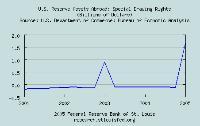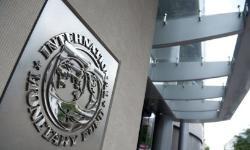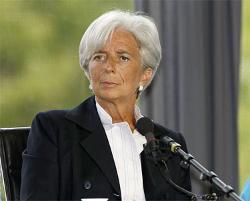











 |
 |
 |
 |
 |
 |
 |
 |
 |
 |
 |
 |
 |
 |
 |
 |
 |
 |


Special Drawing Rights - SDRs
 An international type of monetary reserve currency, created by the International Monetary Fund (IMF) in 1969, which operates as a supplement to the existing reserves of member countries. Created in response to concerns about the limitations of gold and dollars as the sole means of settling international accounts, SDRs are designed to augment international liquidity by supplementing the standard reserve currencies. SDRs can be considered an artificial currency used by the IMF and defined as a "basket of national currencies". The IMF uses SDRs for internal accounting purposes. SDRs are allocated by the IMF to its member countries and are backed by the full faith and credit of the member countries' governments.
An international type of monetary reserve currency, created by the International Monetary Fund (IMF) in 1969, which operates as a supplement to the existing reserves of member countries. Created in response to concerns about the limitations of gold and dollars as the sole means of settling international accounts, SDRs are designed to augment international liquidity by supplementing the standard reserve currencies. SDRs can be considered an artificial currency used by the IMF and defined as a "basket of national currencies". The IMF uses SDRs for internal accounting purposes. SDRs are allocated by the IMF to its member countries and are backed by the full faith and credit of the member countries' governments.
In fact the SDR is an international reserve asset, created by the IMF in 1969 to supplement the existing official reserves of member countries. SDRs are allocated to member countries in proportion to their IMF quotas. The SDR also serves as the unit of account of the IMF and some other international organizations. Its value is based on a basket of key international currencies.
The Special Drawing Right (SDR) was created by the IMF in 1969 to support the Bretton Woods fixed exchange rate system. A country participating in this system needed official reserves—government or central bank holdings of gold and widely accepted foreign currencies—that could be used to purchase the domestic currency in world foreign exchange markets, as required to maintain its exchange rate. But the international supply of two key reserve assets—gold and the U.S. dollar—proved inadequate for supporting the expansion of world trade and financial development that was taking place. Therefore, the international community decided to create a new international reserve asset under the auspices of the IMF.
However, only a few years later, the Bretton Woods system collapsed and the major currencies shifted to a floating exchange rate regime. In addition, the growth in international capital markets facilitated borrowing by creditworthy governments. Both of these developments lessened the need for SDRs.
Today, the SDRs main function is to serve as the unit of account of the IMF and some other international organizations. The SDR is neither a currency, nor a claim on the IMF. Rather, it is a potential claim on the freely usable currencies of IMF members. Holders of SDRs can obtain these currencies in exchange for their SDRs in two ways: first, through the arrangement of voluntary exchanges between members; and second, by the IMF designating members with strong external positions to purchase SDRs from members with weak external positions.
The value of the SDR was initially defined as equivalent to 0.888671 grams of fine gold—which, at the time, was also equivalent to one U.S. dollar. After the collapse of the Bretton Woods system in 1973, however, the SDR was redefined as a basket of currencies, today consisting of the euro, Japanese yen, pound sterling, and U.S. dollar. The U.S. dollar-value of the SDR is posted daily on the IMF’s website. It is calculated as the sum of specific amounts of the four currencies valued in U.S. dollars, on the basis of exchange rates quoted at noon each day in the London market. The basket composition is reviewed every five years to ensure that it reflects the relative importance of currencies in the world’s trading and financial systems. In the most recent regular review that took place in October 2000, the method of selecting the currencies and their weights was revised in light of the introduction of the euro as the common currency for a number of European countries, and the growing role of international financial markets. These changes became effective on January 1, 2001.
The SDR interest rate provides the basis for calculating the interest charged to members on regular (non-concessional) IMF loans, the interest paid and charged to members on their SDR holdings, and the interest paid to members on a portion of their quota subscriptions. The SDR interest rate is determined weekly and is based on a weighted average of representative interest rates on short-term debt in the money markets of the SDR basket currencies.
Under its Articles of Agreement, the IMF may allocate SDRs to members in proportion to their IMF quotas. Such an allocation provides each member with a costless asset on which interest is neither earned nor paid. However, if a member’s SDR holdings rise above its allocation, it earns interest on the excess; conversely, if it holds fewer SDRs than allocated, it pays interest on the shortfall. The Articles of Agreement also allow for cancellations of SDRs, but this provision has never been used. The IMF cannot allocate SDRs to itself.
There are two kinds of allocations:
General allocations of SDRs have to be based on a long-term global need to supplement existing reserve assets. General allocations are considered every five years, although decisions to allocate SDRs have been made only twice. The first allocation was for a total amount of SDR 9.3 billion, distributed in 1970-72. The second allocation was distributed in 1979-81 and brought the cumulative total of SDR allocations to SDR 21.4 billion.
A proposal for a special one-time allocation of SDRs was approved by the IMF’s Board of Governors in September 1997 through the proposed Fourth Amendment of the Articles of Agreement. This allocation would double cumulative SDR allocations to SDR 42.8 billion. Its intent is to enable all members of the IMF to participate in the SDR system on an equitable basis and correct for the fact that countries that joined the Fund subsequent to 1981—more than one fifth of the current IMF membership—have never received an SDR allocation. The Fourth Amendment will become effective when three fifths of the IMF membership (111 members) with 85 percent of the total voting power accept it. As of end-February, 2005, 131 members with 77.3 percent of total voting power had accepted the proposed amendment. Approval by the United States, with 17.1 percent of total votes, would put the amendment into effect.
 The outbreak of the current crisis and its spillover in the world have confronted us
with a long-existing but still unanswered question,i.e., what kind of international
reserve currency do we need to secure global financial stability and facilitate world
economic growth, which was one of the purposes for establishing the IMF? There
were various institutional arrangements in an attempt to find a solution, including the
Silver Standard, the Gold Standard, the Gold Exchange Standard and the Bretton
Woods system. The above question, however, as the ongoing financial crisis
demonstrates, is far from being solved, and has become even more severe due to the
inherent weaknesses of the current international monetary system.
Theoretically, an international reserve currency should first be anchored to a stable
benchmark and issued according to a clear set of rules, therefore to ensure orderly
supply; second, its supply should be flexible enough to allow timely adjustment
according to the changing demand; third, such adjustments should be disconnected
from economic conditions and sovereign interests of any single country. The
acceptance of credit-based national currencies as major international reserve
currencies, as is the case in the current system, is a rare special case in history. The
crisis again calls for creative reform of the existing international monetary system
towards an international reserve currency with a stable value, rule-based issuance and
manageable supply, so as to achieve the objective of safeguarding global economic
and financial stability.
The outbreak of the current crisis and its spillover in the world have confronted us
with a long-existing but still unanswered question,i.e., what kind of international
reserve currency do we need to secure global financial stability and facilitate world
economic growth, which was one of the purposes for establishing the IMF? There
were various institutional arrangements in an attempt to find a solution, including the
Silver Standard, the Gold Standard, the Gold Exchange Standard and the Bretton
Woods system. The above question, however, as the ongoing financial crisis
demonstrates, is far from being solved, and has become even more severe due to the
inherent weaknesses of the current international monetary system.
Theoretically, an international reserve currency should first be anchored to a stable
benchmark and issued according to a clear set of rules, therefore to ensure orderly
supply; second, its supply should be flexible enough to allow timely adjustment
according to the changing demand; third, such adjustments should be disconnected
from economic conditions and sovereign interests of any single country. The
acceptance of credit-based national currencies as major international reserve
currencies, as is the case in the current system, is a rare special case in history. The
crisis again calls for creative reform of the existing international monetary system
towards an international reserve currency with a stable value, rule-based issuance and
manageable supply, so as to achieve the objective of safeguarding global economic
and financial stability.
I. The outbreak of the crisis and its spillover to the entire world reflect the inherent
vulnerabilities and systemic risks in the existing international monetary system.
Issuing countries of reserve currencies are constantly confronted with the dilemma
between achieving their domestic monetary policy goals and meeting other countries’
demand for reserve currencies. On the one hand,the monetary authorities cannot
simply focus on domestic goals without carrying out their international
responsibilities ; on the other hand,they cannot pursue different domestic and
international objectives at the same time. They may either fail to adequately meet the
demand of a growing global economy for liquidity as they try to ease inflation
pressures at home, or create excess liquidity in the global markets by overly
stimulating domestic demand. The Triffin Dilemma, i.e., the issuing countries of
reserve currencies cannot maintain the value of the reserve currencies while providing
liquidity to the world, still exists.
When a national currency is used in pricing primary commodities, trade settlements
and is adopted as a reserve currency globally, efforts of the monetary authority issuing
such a currency to address its economic imbalances by adjusting exchange rate would
be made in vain, as its currency serves as a benchmark for many other currencies.
While benefiting from a widely accepted reserve currency, the globalization also
suffers from the flaws of such a system. The frequency and increasing intensity of
financial crises following the collapse of the Bretton Woods system suggests the costs
of such a system to the world may have exceeded its benefits. The price is becoming
increasingly higher, not only for the users, but also for the issuers of the reserve
currencies. Although crisis may not necessarily be an intended result of the issuing
authorities, it is an inevitable outcome of the institutional flaws.
 II. The desirable goal of reforming the international monetary system, therefore, is to
create an international reserve currency that is disconnected from individual nations
and is able to remain stable in the long run, thus removing the inherent deficiencies
caused by using credit-based national currencies.
II. The desirable goal of reforming the international monetary system, therefore, is to
create an international reserve currency that is disconnected from individual nations
and is able to remain stable in the long run, thus removing the inherent deficiencies
caused by using credit-based national currencies.
- Though the super-sovereign reserve currency has long since been proposed, yet no substantive progress has been achieved to date. Back in the 1940s, Keynes had already proposed to introduce an international currency unit named “Bancor”, based on the value of 30 representative commodities. Unfortunately, the proposal was not accepted. The collapse of the Bretton Woods system, which was based on the White approach, indicates that the Keynesian approach may have been more farsighted. The IMF also created the SDR in 1969, when the defects of the Bretton Woods system initially emerged, to mitigate the inherent risks sovereign reserve currencies caused. Yet, the role of the SDR has not been put into full play due to limitations on its allocation and the scope of its uses. However, it serves as the light in the tunnel for the reform of the international monetary system.
- A super-sovereign reserve currency not only eliminates the inherent risks of credit-based sovereign currency, but also makes it possible to manage global liquidity. A super-sovereign reserve currency managed by a global institution could be used to both create and control the global liquidity. And when a country’s currency is no longer used as the yardstick for global trade and as the benchmark for other currencies, the exchange rate policy of the country would be far more effective in adjusting economic imbalances. This will significantly reduce the risks of a future crisis and enhance crisis management capability.
III. The reform should be guided by a grand vision and begin with specific
deliverables. It should be a gradual process that yields win-win results for all
The reestablishment of a new and widely accepted reserve currency with a stable
valuation benchmark may take a long time. The creation of an international currency
unit, based on the Keynesian proposal, is a bold initiative that requires extraordinary
political vision and courage. In the short run, the international community, particularly
the IMF, should at least recognize and face up to the risks resulting from the existing
system, conduct regular monitoring and assessment and issue timely early warnings.
Special consideration should be given to giving the SDR a greater role. The SDR has
the features and potential to act as a super-sovereign reserve currency. Moreover, an
increase in SDR allocation would help the Fund address its resources problem and the
difficulties in the voice and representation reform. Therefore, efforts should be made
to push forward a SDR allocation. This will require political cooperation among
member countries. Specifically, the Fourth Amendment to the Articles of Agreement
and relevant resolution on SDR allocation proposed in 1997 should be approved as
soon as possible so that members joined the Fund after 1981 could also share the
benefits of the SDR. On the basis of this, considerations could be given to further
increase SDR allocation.
The scope of using the SDR should be broadened, so as to enable it to fully satisfy the
member countries’ demand for a reserve currency.
Set up a settlement system between the SDR and other currencies. Therefore, the
SDR, which is now only used between governments and international institutions,
could become a widely accepted means of payment in international trade and financial
transactions.
Actively promote the use of the SDR in international trade, commodities pricing,
investment and corporate book-keeping. This will help enhance the role of the SDR,
and will effectively reduce the fluctuation of prices of assets denominated in national
currencies and related risks.
Create financial assets denominated in the SDR to increase its appeal.
The
introduction of SDR-denominated securities, which is being studied by the IMF, will
be a good start.
Further improve the valuation and allocation of the SDR. The basket of
currencies forming the basis for SDR valuation should be expanded to include
currencies of all major economies, and the GDP may also be included as a weight.
The allocation of the SDR can be shifted from a purely calculation-based system to a
system backed by real assets, such as a reserve pool, to further boost market
confidence in its value.
IV. Entrusting part of the member countries’ reserve to the centralized management of
the IMF will not only enhance the international community’s ability to address the
crisis and maintain the stability of the international monetary and financial system,
but also significantly strengthen the role of the SDR.
- Compared with separate management of reserves by individual countries, the centralized management of part of the global reserve by a trustworthy international institution with a reasonable return to encourage participation will be more effective in deterring speculation and stabilizing financial markets. The participating countries can also save some reserve for domestic development and economic growth. With its universal membership, its unique mandate of maintaining monetary and financial stability, and as an international “supervisor” on the macroeconomic policies of its member countries, the IMF, equipped with its expertise, is endowed with a natural advantage to act as the manager of its member countries’ reserves.
- The centralized management of its member countries’ reserves by the Fund will be an effective measure to promote a greater role of the SDR as a reserve currency. To achieve this, the IMF can set up an open-ended SDR-denominated fund based on the market practice, allowing subscription and redemption in the existing reserve currencies by various investors as desired. This arrangement will not only promote the development of SDR-denominated assets, but will also partially allow management of the liquidity in the form of the existing reserve currencies. It can even lay a foundation for increasing SDR allocation to gradually replace existing reserve currencies with the SDR


















